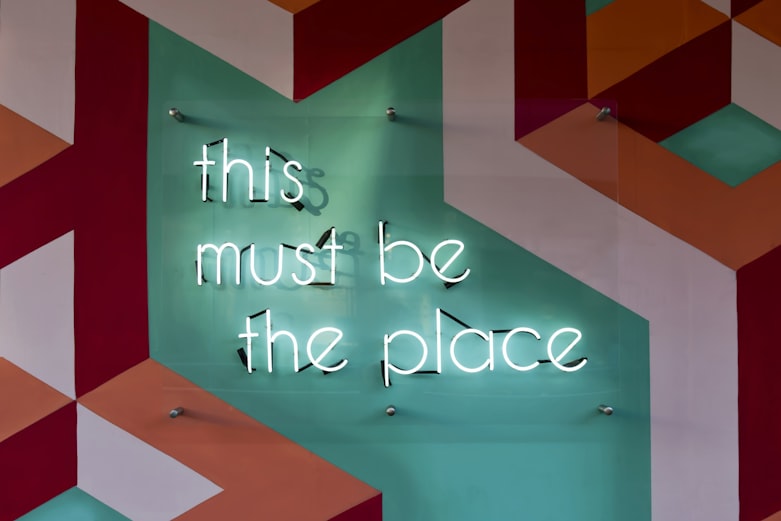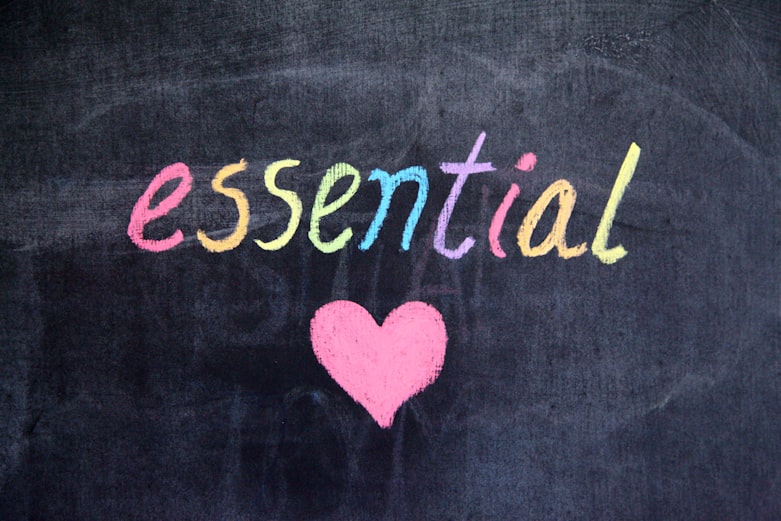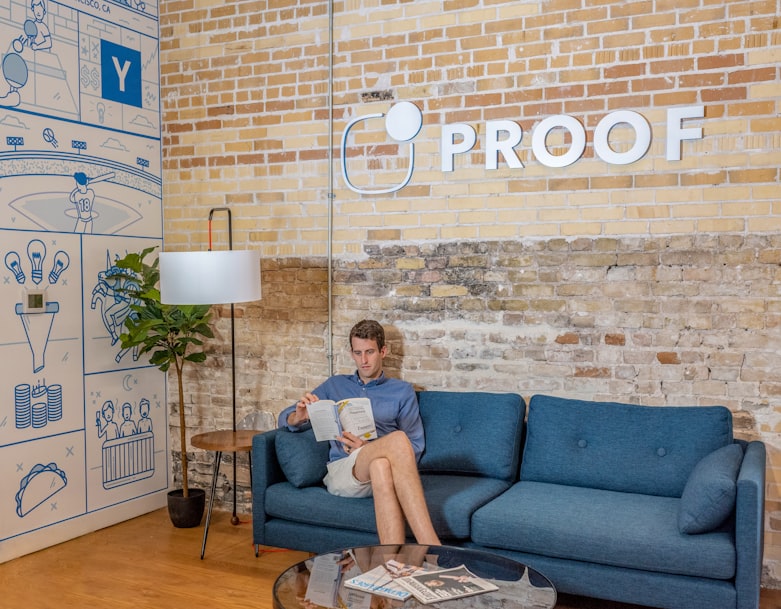When you are job hunting, your resume is often the single most important factor in whether you get hired. That’s because it’s more than a summary of your skills and aptitudes; it’s the first chance you’ll get to leave an impression on an HR employee who looks through hundreds of them a week.

A resume won’t get you a job. It will only land you in the interview seat. So don’t think of it as the final document that will get you the desired position you wanted. If you think that you will be listing everything you did in the resume, you are wrong. Instead, you must work out the most relevant things and add the information that you believe is essential for the job you are applying for.
Think of your resume as a marketing tool. Only instead of marketing a product or service, you’re marketing your overall potential with a new company. And because the average HR professional only takes 6 seconds to look at your resume, you need to make sure it’s well-formatted, covers vital information, and grabs their attention from the moment they pick it up.
So, without any further ado, let’s get started with how to write a resume!
Choose a Desirable Format
First and foremost, you should always start with a format that catches the eye and offers balance from top to bottom. You want your resume to be easy to scan while highlighting the important details recruiters are looking for. There are a variety of formats available; you can create a format that suits you well or choose from the most commonly available. The following three formats are commonly used globally and accepted by the recruiters:

Reverse Chronological / Chronological: Focuses on work experience that’s relevant to the job you are interested in.
Functional / Skills-Based: Ideal for recent graduates or those with minimal relevant work experience.
Hybrid / Diverse Combination: A smart choice for those with various skillsets applying for jobs with varied needs.
Let us explore them in more details:
Chronological / Reverse Chronological
This format involves listing down the essential components of a resume in chronological order. You can only opt for this format if you have a long list of work experience to share. Professionals with an established career and a successful employment history usually opt for such a format.
In this format, you have to include Work Section immediately after the information in the header (Name, Contact Information and Career Objective). Work Section involves listing down the past experiences and employment history you had in reverse or direct order. If you choose the Reverse Chronological Format, then you will be ordering a list of information by the date. Whereas, the Chronological Format involves listing down the data by the origin date: Older Dates first while the newer dates listed down below the predecessor.

This format is suitable for the recruiters as it highlights career advancements and successes easily. The recruiter will get a gist about your career by looking at the format easily. Additionally, it signifies the relevant job experience needed to give an edge on the job selection. On the adverse side, the format shows employment gaps and does not implies the skills and abilities much. Therefore, it is best suited for professionals who already have employment history and highly pertinent work.
Functional / Skill Based
Functional Format Resume signifies upon skills, achievements and accomplishments of the job applicant. This format is opted by the fresh graduates or undergrads whose only source of employment is their skills and achievements. Their lack of work experience is not the signifying factor in the resume therefore it is suggested they choose the Skill Based Format to emphasize their skills and achievements in the resume.
The general format is similar for both, but the difference occurs after the header information is added. The functional format involves listing down relevant skills for the job. It is highly recommended that the skills based on the current job are added so that the relevancy of the resume is consistent and it doesn’t end up in the trash can. The skill-based format must be stressing upon the individual area of competence.

The functional or skill-based format easily covers up the work experience section by shadowing it with the candidate’s skills and abilities. Its emphasis on the skills, abilities and accomplishments of the candidate makes it best suited for job seekers who have minimal to no work experience and are about to enter into the professional career with their first job. On the adverse side, the following format is not recommended by the recruiters especially for those candidates who have liable work experience. Since the format leaves out the work experience it is implied that the professionals opt for the Chronological or Hybrid Format.
Hybrid / Diverse Combination
One can’t get satisfied with either of the other two formats, since he wants to emphasize both, work experience and skills. Therefore, the amalgam of the two is suggested for such candidates, known as the Hybrid or Diverse Combination Format. The format is formulated while keeping in mind the significant aspects of both Chronological and Functional Format Resumes. The format lays down the work experience and skills on the same document with equal emphasis on both the important factors of employment.
It is recommended for those candidates who have been enjoying a successful and strong career and has also built up a relevant skillset throughout the career which makes them distinct from other candidates. In this format, right after the header, you add skills, interest and work experience sections in no particular order; although it is still recommended to list down the work experiences first. Follow the same chronological or reverse chronological format while listing down work experience. Similarly, add only those skills that are relevant to the job.

Summing up the format, it signifies the skills and experience equally and combines the best elements of the prior two traditional formats: chronological and functional. Additionally, it provides ample space for using resume keywords which are essential if the employer is using Applicant Tracking System. Hence, it is best suited for most job seekers. On the adverse side, the hybrid format is reluctant in hiding the resume gaps.
So which resume format should you opt for?
Regardless of what you choose the format should be visually appealing, easy to read and feature plenty of white space around the margins. This includes readable fonts, clear headings, and even a succinct length; all to ensure your content gets read.
Work on a Desirable Layout
After your resume format, what matters is the layout you go through with. It has to be neat, organized and easy to read. Clustered, long and unimpressive layouts result in the resume going down the trash can. So What must you keep in mind when working out a desirable layout:
- Section Headings must be clear. They must be short but contain enough information for the reader to easily comprehend what the section is about.
- Choose an easily readable font. It must be professional like Times New Roman or Calibri and have a font size of 12-14 points for main text and 16-18 points for headings.
- Always leave ample white spaces. You can’t clutter the resume with information since it looks untidy and unreadable to the recruiter.
- Choose a desirable resume length. It all depends on how relevant your information is to you’re the job you are applying to. It is ideal to keep the resume to 1-2-page maximum but if the relevance suggests going beyond that then you can increase the pages. Recruiters take only a few seconds to skim through so keep in mind what you should be adding.
What Sections must you include in the resume?
Once you have decided upon the format you will be opting for and the layout you will be applying in your resume, you have to work around the sections you will be including in your resume. An ideal resume includes the following sections:
- Header
- Professional Summary
- Education
- Work Experience
- Skills
- Achievements
- Other Optional Sections
Let us move on to explain each section in detail and how to write them.
Header
The header is at the top of your resume. It includes:
- Name – First Name, Middle Name (Optional) and Last Name
- Phone Number – Your phone number is preferred. A landline can also be added.
- Email Address – Professional Email Address that you access frequently
- Social Media or Website Links – LinkedIn Profile Links are a must to enter these days. We all know the significance that the platform plays in the professional careers of individuals.
Information in the header must always be true. False information will fall negatively back on to you since you won’t be able to receive the updates from the recruiter. You can’t make it difficult for hiring managers to reach out to you.

Additionally, adding other social media links like Facebook or Instagram is strongly not recommended since they don’t reflect your professional self; add only if the job requirements ask for it. Moreover, adding email addresses like princeyoyo123@yahoo.com is NOT acceptable. It will create an adverse impression. Instead, use a professional email address that contains only your name and numbers.
Professional Summary or Objective
A summary and objective seem identical to the candidate but they are two diverse things. A summary indicates the candidate’s skills, achievements and experience and how they are suitable for the job role they have applied for. On the other hand, the objective includes brief statements that indicate your goals regarding your career and what you want to achieve with the career you have opted for.
The resume summary is used in nearly every recruitment situation. It must be there on your resume when you are applying for a new job or position regardless of your role. It gives a gist about yourself and helps in strengthening your resume for the job applied. However, the objectives are used when you are a fresh graduate or when you, a professional, is opting for a career change.

Both summary and objectives are important in the resume. These few lines at the top of your resume highlight and promote you. Therefore, it is really important how you write and the choice of words you use. You have to impress the recruiter with it so be careful with the professional summary or objective. Check out various examples on the internet.
Education
Your academic credentials are important in every job you apply for even though if you have completed 10-15 years of Professional Life. It is common to include the education section in your resume since it shows your academic qualifications and whether you meet the criteria. The education section is highly essential for fresh graduates since it will serve as the qualification as to whether your education advocates your entry to the job.
In this section, include the full name of the institution, degree type and the majors you graduated in. These are the common and must-add information in the section.
Other information depends upon where you currently lie in your career. If you are a fresh graduate, then adding CGPA and mentioning Secondary School information will suffice. If you have experience, then the education section will only serve as a requirement and must not include unnecessary details that will prolong the resume.

Skills, Achievements and Projects underwent in the academic career must be added under each institution if they support your current job requirement. In addition to that, lying about your education is strongly prohibited. In this era, it is easy to trace out the truth regarding education therefore stick to the truth and play safe.
Work Experience
Professional History is essential if you are already in the professional world for 3-5 years and more. This list will make the employer determine whether you are compatible with the job you have applied for considering your experience in the prior positions.
Work Experience is the heart of your resume hence it needs to be carefully articulated in the resume. Make sure you are using the reverse-chronological format when listing down the work experience since it allows feasibility to the recruiters for finding the information they need. The Section includes the following:
- Company Name
- Geographic Location
- Job Title
- Starting and Terminating Dates
- A brief list of Projects and Accomplishments
With the work experience section, you have to affirm the recruiter about your potential and capabilities. You can’t add vague information in it, rather, directly add what you did in the job and what you accomplished from it.

Numbers speak louder than a fewest of words. These numbers will assure the recruiter that the candidate is the right person for the job. Moreover, apart from numbers, using compelling language grabs the attention of the recruiter as well. You have to make a strong impression of yours in front of the employer so using strong words instead of vague ones will positively impact your profile.
Additionally, people intend to list all the experiences they had up till the recent date in the resume. It is not a good move and unnecessarily prolongs the resume. Relevancy and recent experience are what matters the most. The recruiter will be more interested in what you did recently and not in what you did a few years ago. Although, if it is a remarkable accomplishment it will attract his eye.
Skills
The foundation of your resume will fall if you don’t have the required skills for the job. Recruiters are on the lookout for a person who possesses skills. Listing skills separately work, but they are proven with the situations you add in your Education, Work Experience and Extra-Curricular Section. You must write your work and accomplishments such that they reflect a particular skill and is easily interpreted by the recruiter.

There are many skills out there that you can discover. You might even not know what skills you possess. Therefore, let us look at some major groups of skills:
Soft Skills: Such skills describe your work behavior and indicate whether you are fit for a certain job or not. They are based on your personality and are developed naturally within you; you just have to hone them. They are not job-specific but essential to decide a candidate’s professional future and apply to nearly any industry. Examples of Soft Skills include – Communication Skills, Teamwork, Critical Thinking, Leadership, Managerial Skills, Time Management, Logical Reasoning, Creativity and much more.
Hard Skills: Hard Skills are different from the above-mentioned skills. They don’t come naturally at hand but they are taught to through specialized education or training. They can be job-specific so you must carefully add them to your resume, keeping in mind they are not irrelevant to the job you are applying for. These skills come in handy in a specific job role and responsibility. You should always have a lookout for the hard skills you possess and what are the in-demand hard skills currently. As of 2021 following are the in-demand hard skills: Business Analysis, Cloud Computing, Accounting Tools, Affiliate Marketing, Statistical Analysis, Software Development, Automotive Services, Analytical Reasoning and much more.
Recruiters make the judgement about a job seeker’s candidacy based on their skills and work experience. Skills play a vital role in the selection if you don’t have work experience. A strong and effective resume includes a combination of both hard and soft skills. The parallel effect of both the skills impresses the recruiter into edging you out for the interview. You can’t lie about your skills in your resume because if it is caught you will be the one to get a negative impact.
How shall you list skills on your resume?
As mentioned above, your skills shall be reflected in your sections above that describe your experience, projects, internships etc. However, you still can add them to your resume in multiple ways. It is always recommended to list your top skills in the resume so they can also act as keywords. Always list the skills as per the job relevancy. You can’t waste the section by taking chances with other skills.

Here are some ways you can adopt to add skills to your resume:
- A simple way is to list them all under the skills heading and add some proficiency (Beginner, Intermediate, Advanced, Professional) adjacent to them.
- Another way is to add the skills and describe them if the job requirement says too as per the relevancy of the job.
- Lastly, if you possess multiple skills and you wish to add them all then disintegrate your skills list and make subheadings like Soft Skills, Hard Skills and Technical Skills.
Other Optional Sections
It is always great to add information that enhances your resume. Up till now, you have added all the concrete details that must be there on the resume to qualify for a job and possibly get a chance for the interview. However, you can still add a few more sections that you feel can uplift your resume and make it stand out among other resumes reviewed by the recruiter. You still have to make sure that relevancy is not compromised here. A recruiter receives several resumes for a single job posting but you have to make yours stand out by making it unique.

Let us have a look at these optional sections and how to write them:
Awards and Accomplishments: You might have a question in mind here that why isn’t this section considered one of the main sections of the resume? Like skills, your awards and accomplishments are already covered in the work experience or education sections. These awards and accomplishments will be those that are not mentioned in the above sections previously. You feel like adding them separately to give it the limelight and make the awards and accomplishments noticeable.
Internship Experiences: This section will work for fresh graduates looking for jobs. Since they are fresh out of the university, they don’t have the work experience that can be added to the resume. Therefore, to support the other sections that are weighed by the recruiter, the internship section always gives value to the candidates. It shows the recruiter the kind of professional exposure that the candidate experienced and how prepared he will be for the new ventures in the company. Add internships in reverse chronological order and include, Name of the company, Internship title, duration and the experience you gained there.
Volunteering and Other Activities: This section will cover those activities that you performed up till now and hold significance to the job you are applying to. They add another layer of uniqueness to the resume. This section leaves an impression on the recruiter about your dedication towards the task and your attitude towards work which is more on learning and execution than on earning money. These activities also reflect the skills that you would have mentioned before.
Certifications or Licenses: Some job qualifications require certifications or licensing. If you are a software user, then certifications that prove that you are a certified user will increase your value and give you an edge towards the job you are applying for. Skills require certifications as proof. If you weren’t able to reflect the skills through your activities, then certifications or licenses will support your skills section.
Hobbies and Interests: You still feel like there is a lot of space in your resume that must be filled. Then add Hobbies and Interests. This section will show the non-professional side yours. It might not impact the resume like other sections but will help the recruiter analyses the kind of person you are as an individual. Therefore, never hesitate to add this section to the resume; you never know what the recruiter might like and shortlist you for the interview.
Language: Language sometimes matters, especially if the company you are applying to is multi-national. Always mention in your resume, if you have space, the languages you know and their proficiency (Native, Fluent, Proficient, Intermediate or Basic). Even if you think your company or job nature is not such that it will require language, but adding it will provide you benefits one way or the other. Bilinguals and multilingual are always at an advantage since their demand and hiring rate is higher than a monolingual individual.
Publications: Publications mean any document that you produced by yourself and got published online or in a documented book like Research Papers, Academic Writings, Reports and many other scriptures. If you have such things published, then add their URL under this section. The interested recruiter will be more than happy to skim through your publication. It usually helps graduate students since it increases their value reflecting their hard work in producing a document. Add your publications in reverse-chronological order and choose the referencing style that seems apt to you.
Projects: Projects show your dedication and enthusiasm towards your chosen field. The more successful projects you will have, the more interested your recruiter will be to know about you. These projects can be your academic projects, part-time entrepreneurial projects or self-allotted projects that you performed in your spare time. Projects also reflect the schooling you might have undergone that developed your skills. Therefore, adding this section adds another layer of uniqueness and reflects a lot of things that your recruiter may want to know.
Don’t Forget the Cover Letter
A cover letter is a document that you attach along with your job application. It is also referred to as an application letter or a covering letter. It is important to attach the cover letter along with your resume before you send your application forward. You must know how to write a striking cover letter that will leave an astounding impact on the recruiter so that he will be obliged to shortlist you.

Cover Letter is more inclined towards the job you apply for and addresses the recruiter directly. It explains why you are fit for the job and elaborates certain points from your resume effectively which makes it easier for the recruiter to understand you. Even though some companies might not request a cover letter, but don’t ever forget to attach it nevertheless. A single resume may not work effectively but the combination of two may edge you out conveniently.
Let us look briefly into how to write a cover letter:
- Start with the header as discussed above for the resume. Immediately after the header, add your greetings to the concerned person.
- Write your first paragraph that will indicate your directives towards the job, your interest in the role and the qualifications you have. You can mention your achievements and some work experience that will support your candidate profile.
- The second Paragraph will concern mostly regarding you convincing the employee. You shall be writing about why you are the right person for the job, how much impact you will create and what purpose you have with the job. Explain how you can rightly meet the job qualifications and how dedicatedly you can fulfil the requirements.
- You shall be adding value to yourself in the last paragraph and close with a positive note to the employee.
- End the cover letter with a professional closing.
Other Things to Consider

Don’t Overload Your Resume with Information
It can be easy to think that the more information you put on your resume the more likely they are to feel like you’re qualified for the job. But adding too much is even worse than not adding enough. That’s why you should focus on just a few distinct sections that tell your “story” while driving them to contact you to find out more.
Maintain the uniformity
Your resume must not show signs of confusion and non-uniformity. Consistency is as important as the content in the resume. What do we mean by consistency?
By consistency, we mean that if you started the resume with a certain standard then you have to maintain it throughout the resume. Date Formatting, Tenses, Font, Colors etc. shall be consistent throughout the resume.
For example: If you used a certain Date format in the earlier section then you must maintain the uniformity in other sections as well.
Similarly, don’t go tantrums over the tenses in the resume. Use the right tense at the right time. Don’t mix up the grammar to reflect your confusions towards the recruiter.
Keywords are essential
It is common for hiring managers to use Applicant Tracking System (ATS) to inspect your resume for relevant keywords. It makes it easier for them to screen out some resumes who at least have the desired keywords in the resume. To pass through the ATS you must have the relevant keywords in the resume as well.

Read the job description carefully and brainstorm the possible keywords linked to it. You can even find words and phrases from the job description as well. Scatter those keywords throughout your resume in different sections so that they are easily scannable. The keywords usually involve skills, task or responsibilities.
Acronyms work but too much Jargon doesn’t
You might have heard from your seniors that Acronyms save spaces. That is indeed true. However, loading up your resume with lots of Acronyms and specialized terms will fall back at you adversely. For recruiters who may not have enough knowledge about the job, the requirement will feel uneasy with your resume and might not consider you further for the application process.
Tailor Your Resume
You might feel like it takes a lot of filtering to do that but it works effectively. When you make a specialized resume, your employer will be easily able to link you to the job. Adjust the keywords, change the professional history and educational experiences and add skills that are relevant to the job you are applying for.
Never Fail to add Metric
Your resume is reflecting your successes and accomplishments at previous work or in your academic career. But what if those successes are ignored only because they were lumped in a swarm of words. Hiring managers love to see metric data in the resume.

The quantifiable achievements make your resume attract the hiring manager’s attention immediately. Always use numbers when you highlight your accomplishments. For Example: Led a team of 100 individuals to launch a sustainable project. Add the numbers wherever you can.
Shall I add GPA?
For fresh graduates, GPA is important as it plays a vital role in backing you up in front of the hiring manager. They will be impressed to see a high GPA student in front of them. Therefore, if you have a presentable GPA, include it in your resume. For fresh graduates, it is a must. For professionals, if the job requirement says so, include it otherwise you can leave it out.
Resume Buzzwords that are found in every resume
Job seekers tend to write content as exquisitely as possible. There might be possible that the content in some job seekers might be the same. There are some clichéd words that every candidate uses and that you must avoid using. Instead, use words that make more sense and make you stand out. For Example: Replace Responsible with Managed or Directed. Similarly, Replace Expert with Published or Delivered.
Action Verbs
You are marketing yourself, hence adding action verbs sends a striking personality reflection to your employer. Weak or vague verbs will make your resume a gloomy document which you certainly want to avoid. Add action verbs to give your resume strength.
Avoid the Common Mistakes
You might have created the resume but still, there will be mistakes that are between the lines. You must address them before it is too late.

- Remove all the spelling mistakes, grammatical errors and typos
- Don’t emphasize duties rather signify your accomplishments
- Write a Striking Summary before you lose your reader with a bad one
- Always use Action Verbs
- Never provide incorrect contact information
- Don’t try to fit everything on one page to follow the one-page standard
- Never leave out Important information
- Be Specific
Avoid the Generic – Make an Employer Need You
Nothing is exciting about reading a resume chockfull of skills and achievements that have nothing to do with the job at hand. That means the resume you create online or share in person should be written to the exact job you’re applying for and not for any generic job as a “blanket” resume.
We want you to,
- Pick your layout,
- Add the right job-related skills,
- Stylize the font and design,
- Proofread and double-check each section,
- Keep a can-do attitude that keeps you positive and focused, so you can move from a paper resume to landing a face-to-face interview.
Once it’s all wrapped up and looks amazing, make sure you pair it with a convincing cover letter that briefly explains who you are, what you’re about, and why you’d be perfect for the job.
What’s Next?
Proofread Your Resume
At this point, you may have completed your resume and edited it as per standards. However, there is still a chance that there might be errors in your resume. Don’t send it immediately give it a proofread.

A job seeker initially just stuffs in information without worrying about potential errors in the resume. Once the resume is completed, the job seeker uses auto-correct to correct mistakes and other grammatical errors. That covers up major mistakes in your resume.
You still have to read it several times so that you are affirmed that your resume is apt and it doesn’t need any further modifications. It usually happens that some parts look good at this first read but they seem out of order the next time you read. Therefore, it is of utmost importance that you finalize your resume only when you feel comfortable with it.
Another practice that you can perform is to make your resume proofread by your family members, friends or seniors of your fields. If they find it difficult to get an idea about you through the resume, then you need to revise it. It will be delightful if your resume reader is also a recruiter in some firm. He will highlight potential errors and suggest intuitive modifications that will uplift your resume.
Saving the resume
Make sure your resume is in Word Document and PDF format. You never know what the recruiters might ask for. Word Document don’t preserve the format of the resume. If your employer has a different Word software, then he will receive different formatting. However, PDFs are known for preserving the formats. You send it to anyone you know despite the software they have and the formatting will not change. In any case, make sure it is available in both formats.
Naming the resume
There is numerous resume naming convention you can adapt to. You have to maintain consistency across all the attachments that you will be emailing as a part of your job application. It is common to follow the following convention: name-position-cover-letter or name-position-resume. You can even use underscores as a replacement for the hyphens.
Emailing the resume
You are now ready to send it to the employer. Before sending it you have to be 100% sure that what you created is correct. You shall have no regrets. Use a professional email while sending it to the email provided in the job advertisement. It will be suitable if you choose the same email address as the one mentioned in the resume and the cover letter to send the job application.

Make sure it is professional and identifiable. Informal Email Addresses (fairybeauty@gmail.com) or General Email addresses (contactme@hotmail.com) will never let you progress further. Always enter the subject and write few lines in the email body. Specific Greetings like Hello David is preferable to general greetings.
It is how it is!
Wow, that was super detailed. You have read all the way through, which means you are ready with your resume. It may seem a daunting task at first but once the draft is made you will feel relieved. A resume is very important in professional life and making a striking resume is essential to get qualified for the interview.

If you have read the blog, then you must start working on the resume immediately. If you have made it already then get ready to email it to your employer along with a well-crafted cover letter. Happy job hunting!

